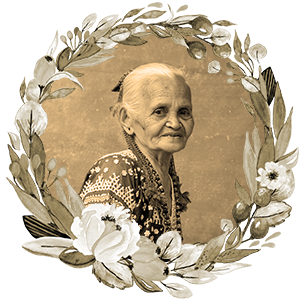
Manlilikha ng Bayan, Textile Weaver and Dyer, Culture Bearer
August 8, 1914 – January 26, 2021
Fu Yabing Masalon Dulo was a Manlilikha ng Bayan (Living National Treasure), Filipino textile master weaver and dyer, and bearer of an almost forgotten culture. (‘Fu’ is an endearment used by a non-family member to address an old Blaan woman.) At her death, she was one of only two surviving master designers of the mabal tabih art of the indigenous Blaan people of southern Mindanao.
Fu Yabing of Sitio Amgu-o, Polomolok, South Cotabato, started weaving at the age of 14 and was a teacher and cultural elder.
She preserved the Blaan traditional ‘mabal tabih’ art of ikat weaving and dyeing. Her exemplary oeuvre brought pride to her community, animating the interest of many young Blaan in their remarkable cultural heritage.
Ikat is one of the oldest textiles in the world. The term ‘ikat’ refers to the dyeing technique used to create the designs on the fabric. ‘Mabal tabih’ or ikat weaving is an almost extinct form of art in the Philippines. ‘Mabal’ is a Blaan term for the weaving process using abaca fibers while ‘tabih’ refers to the finished handwoven cloth and also the traditional Blaan tubular skirt. The mabal tabih can be used to decorate interiors or be fashioned into ‘albung ansif,’ an embroidered blouse, or ‘dafeng,’ a malong or tubular skirt.
Yabing dedicated her life to teaching people about the craft. She was recognized by the national government for her commitment to the safeguarding and promotion of the indigenous craft, thus she was among three traditional weavers from Mindanao who were declared as “Living National Treasures” and conferred with the Gawad sa Manlilikha ng Bayan im 2016.
One of Fu Yabing’s works can be seen at the National Museum. She is also the featured personality on the cover of Ani 40: Katutubo, the Cultural Center of the Philippines’ official literary journal.
On January 26, 2021, Fu Yabing passed away at the age of 106, one of the last master weavers who kept the Blaan traditional mabal tabih art alive. She passed her ikat weaving skills to her only daughter, Lamina Dulo Gulili, who said she used to observe her mother weaving until she was already doing it by herself, mastering the art through years of practice.
Yabing’s family hopes for the continued support of the government for them to be able to preserve their culture amidst the legendary weaver’s passing. As Arthur Dulo Gulili, her grandson, said: “This is not history, but a victory!”
Everybody hopes that despite the demise of the master weaver, the entire Blaan community, municipality, and province will be strengthened and bound together tightly to uphold the Blaan culture, just like how abaca threads are woven together to create a beautiful masterpiece, the mabal tabih, part of the Filipino cultural heritage.
0 Comments